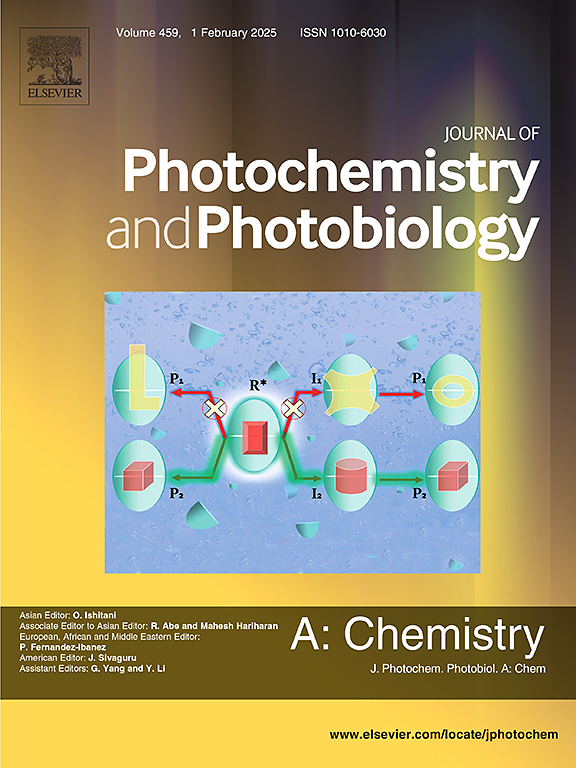Synthesis of novel bioactive amides derived from carbazole moiety with deep-blue and single-component white photoluminescence
IF 4.1
3区 化学
Q2 CHEMISTRY, PHYSICAL
Journal of Photochemistry and Photobiology A-chemistry
Pub Date : 2025-03-19
DOI:10.1016/j.jphotochem.2025.116394
引用次数: 0
Abstract
This work focuses on the chemical synthesis of three fluorescent bioactive amides tethered carbazole moiety by coupling 3-amino-9-ethylcarbazole with different aliphatic carboxylic acids including valeric, hexanoic, and heptanoic acids. NMR spectroscopy and HRMS were utilized to confirm the claimed structure of the target compounds indicating good agreement. The antimicrobial activity of fluorescent amides was assessed against different strains of gram negative and gram-negative bacterial as well as fungi demonstrating outstanding activity close or same as the control. Moreover, the molecular design, DFT calculations, and photoluminescence characteristics of these dyes have been investigated. The examined materials solutions emitted a deep-blue emission. Interestingly, with the powders, on the other hand, a single component emitted white light. The creation of aggregated molecules in the solid state improved the emission intensity at long visible wavelengths, resulting in a change in the emission color from the solution to the powder. The studied materials also emitted consistently at high temperatures. Furthermore, the odd–even effect both on the molecular packing and emission characteristics has been proven. As a result, the molecules under investigation provide a unique combination of benefits: a simple molecular structure, deep-blue emitters, white emission from a single material, and an odd–even effect.

求助全文
约1分钟内获得全文
求助全文
来源期刊
CiteScore
7.90
自引率
7.00%
发文量
580
审稿时长
48 days
期刊介绍:
JPPA publishes the results of fundamental studies on all aspects of chemical phenomena induced by interactions between light and molecules/matter of all kinds.
All systems capable of being described at the molecular or integrated multimolecular level are appropriate for the journal. This includes all molecular chemical species as well as biomolecular, supramolecular, polymer and other macromolecular systems, as well as solid state photochemistry. In addition, the journal publishes studies of semiconductor and other photoactive organic and inorganic materials, photocatalysis (organic, inorganic, supramolecular and superconductor).
The scope includes condensed and gas phase photochemistry, as well as synchrotron radiation chemistry. A broad range of processes and techniques in photochemistry are covered such as light induced energy, electron and proton transfer; nonlinear photochemical behavior; mechanistic investigation of photochemical reactions and identification of the products of photochemical reactions; quantum yield determinations and measurements of rate constants for primary and secondary photochemical processes; steady-state and time-resolved emission, ultrafast spectroscopic methods, single molecule spectroscopy, time resolved X-ray diffraction, luminescence microscopy, and scattering spectroscopy applied to photochemistry. Papers in emerging and applied areas such as luminescent sensors, electroluminescence, solar energy conversion, atmospheric photochemistry, environmental remediation, and related photocatalytic chemistry are also welcome.

 求助内容:
求助内容: 应助结果提醒方式:
应助结果提醒方式:


